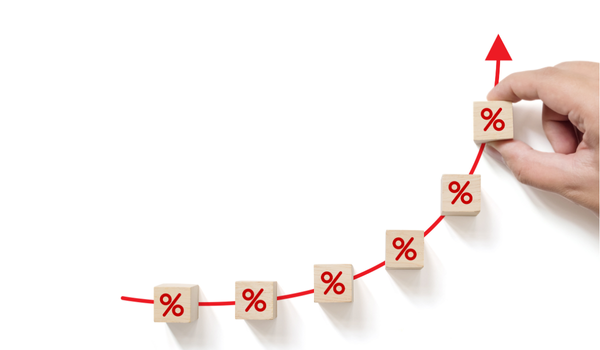When central banks shift from easy money to tighter policy, the ripple effects touch almost every line of your household budget, from mortgage payments to credit-card rates and even the projected growth of your retirement nest egg.
After years of historically low borrowing costs, the past three years have delivered the sharpest global rate-hiking cycle in decades. For many consumers and investors, this “new normal” of higher financing costs feels unfamiliar and, frankly, a bit unsettling. Yet understanding why rates rise, and how that affects savings, debt, and portfolios, equips you to navigate the changes with confidence rather than confusion.

What are Interest Rates and Why Do They Rise?
Interest rates are the price of borrowing money, expressed as a percentage of the principal. Central banks, such as the U.S. Federal Reserve, adjust short-term policy rates to influence economic activity, employment, and inflation. When growth is strong or inflation exceeds target levels, policymakers typically raise rates to cool demand and stabilize prices. Since March 2022 the Fed has lifted its target range from near-zero to 4.25 – 4.50 percent (most recently reaffirmed on May 8, 2025) to tame stubborn inflation.
Several forces can push rates higher:
- Inflation expectations: Lenders demand more return when they fear future dollars will buy less.
- Economic momentum: Robust GDP growth increases demand for credit, bidding rates up.
- Global capital flows: If investors pull money from U.S. bonds for better yields elsewhere, domestic rates must rise to compete.
- Fiscal dynamics: Bigger government deficits mean more Treasury issuance, which can nudge bond yields higher.
Understanding why rates climb helps you anticipate downstream effects on your wallet.
The Effect of Rising Interest Rates on Finances

Immediate Impacts on Personal Savings and Loans
Higher policy rates ripple quickly into consumer products. By early June 2025:
- High-yield savings accounts pay around 4.40 percent APY, their best level in two decades.
- 30-year fixed mortgage rates hover near 6.96 percent, nearly double their 2021 lows.
- Average variable credit-card APRs sit at 20.12 percent.
Savers benefit immediately: every extra percentage point on a $25,000 emergency fund yields roughly $250 more a year. Borrowers, however, see monthly payments climb. On a new $400,000 mortgage, a one-percentage-point jump adds about $250 to the monthly bill and more than $90,000 in lifetime interest.
The Ripple Effect on Investment Portfolios
Rising rates reset the calculus for most asset classes:
- Bonds: Prices fall when new bonds are issued with higher coupons, reducing the market value of older, lower-yielding paper.
- Equities: Higher discount rates drag on valuations, but sectors differ. Banks may gain from wider lending margins, while utilities and tech often lag. In early 2025 the S&P 500 still advanced 4 percent year-to-date, showing rate worries can be offset by earnings momentum.
- Real estate: Capital-intensive property deals slow as financing costs climb, which can push cap rates up and prices down.
Portfolio volatility tends to rise during hiking cycles as investors re-price risk.
Consumer Credit and Purchasing Power
Credit-card APRs and home-equity lines track the prime rate almost point-for-point. Even a modest increase can compound quickly:
|
Balance |
APR 17% |
APR 20% |
Interest Paid |
|
$5,000 |
$842 |
$1,000 |
+ $158 |
For households already carrying revolving debt, higher rates erode disposable income and curb discretionary spending, creating a feedback loop that can slow the economy.
Strategies to Safeguard Your Finances

Managing Debt Wisely
- Refinance or consolidate variable-rate debt into fixed-rate personal loans while rates remain below projected peaks.
- Accelerate principal payments on mortgages or student loans; every extra dollar paid today is worth more than a dollar paid when rates (and inflation) climb.
- Maintain a high credit score to qualify for the lowest available rates when you must borrow.
Adjusting Your Budgeting and Spending Habits
- Index your budget to higher debt costs. Treat the extra interest as a fixed expense and cut discretionary categories (streaming services, dining out) to offset it.
- Capture the savings upside. Funnel the better yields on money-market or high-yield accounts into an “interest-dividend” bucket for future goals instead of spending the windfall.
Exploring Alternative Investment Avenues
- Short-term Treasuries or CDs can now out-yield the dividend rate of many blue-chip stocks with near-zero credit risk.
- Series I savings bonds adjust with inflation and currently offer composite rates above many taxable bond funds.
- Floating-rate or leveraged-loan funds benefit directly from higher benchmark rates, though credit risk requires careful screening.
Diversification across rate-sensitive and rate-resilient assets can smooth returns.
Long-term Financial Planning Amidst Rate Hikes
Rising rates alter long-run assumptions baked into retirement calculators. A 6 percent mortgage instead of a 3 percent one may:
- Reduce home affordability, delaying upgrades or downsizing plans.
- Shift the rent-vs-buy equation toward renting in high-cost metros.
- Require revisiting 401(k) contribution targets to compensate for larger housing outlays.
Use revised assumptions for market returns (e.g., 5–6 percent for U.S. equities, 3–4 percent for bonds) when stress-testing retirement projections. Monte Carlo models that ignore higher discount rates can overstate safe withdrawal amounts.
Stay Informed and Adapt
Resources for Tracking Interest Rate Changes
Beyond the official data sources mentioned earlier, build a simple “rate-watch toolkit” that centers on unbiased or first-party information rather than third-party lenders. Start with the Federal Reserve’s press releases and economic projections (they’re free to subscribe to by email), then layer in Treasury auction calendars and Bureau of Labor Statistics inflation reports, both direct government feeds with no marketing overlays.
If you prefer mobile updates, most mainstream news apps (e.g., Reuters, AP, or your phone’s built-in stocks widget) let you follow benchmark yields and Fed-funds futures without steering you to competing financial institutions. Finally, check ATFCU’s own newsletters or online banking dashboard for any special alerts on deposit-rate changes, so you can respond quickly when your local rates move.
The Importance of Continuous Learning
Interest-rate cycles rarely unfold in straight lines. Geopolitical shocks, supply-chain disruptions, or policy pivots can change direction quickly. Cultivating a habit of ongoing financial education, reading central-bank minutes, attending webinars, or following credible analysts, arms you with context for fast moves. Over a multi-decade horizon, adaptability often trumps static planning.
Rising interest rates are a double-edged sword: rewarding savers while challenging borrowers and investors. By monitoring the data, tightening debt management, and rebalancing portfolios toward rate-advantaged assets, you can turn a policy headwind into a strategic tailwind, and keep your financial goals on track even as borrowing costs climb.
Related Resources:

